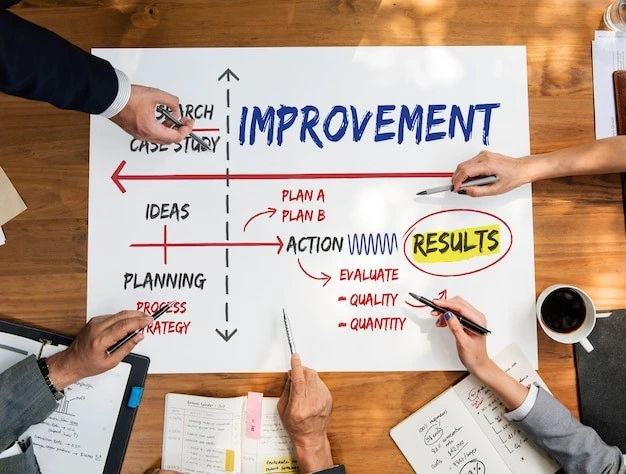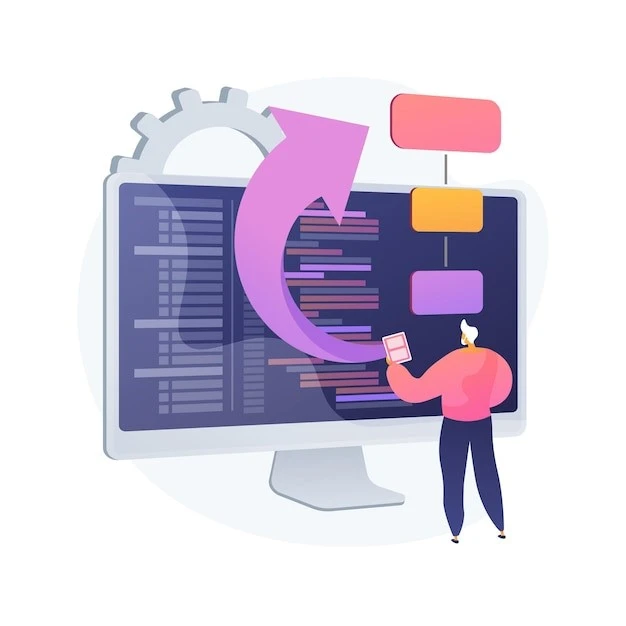Table of Content
Discover Lean Software Development Principles and Wastes for Better Efficiency
Today, efficiency, adaptability, and customer value are of utmost importance in software development. Lean software development principles have emerged as a powerful methodology that provides a set of ideals and practices aimed at achieving these goals.
Inspired by the lean manufacturing principles pioneered by Toyota, lean software development focuses on eliminating waste, amplifying learning, and delivering value to the customer as rapidly as possible. By adopting a lean mindset, software development teams can streamline their processes, reduce unnecessary overhead, and create high-quality software that truly meets user needs. This approach emphasizes collaboration, continuous improvement, and a deep understanding of the entire value stream, ultimately leading to more efficient and effective software delivery.
In this comprehensive guide, we will dive into the core tenets of lean software development, providing a detailed exploration of its fundamental principles and the practical implications for software development teams. By understanding these principles as used by enterprise software development services, we will see how our teams can significantly enhance their productivity, improve the quality of their software, and ultimately deliver greater value to their stakeholders.
What is Lean Software Development – A Comprehensive Overview

Lean software development is an agile methodology that applies the principles of lean manufacturing to the software development process. It emphasizes optimizing the flow of value to the customer by identifying and eliminating waste, amplifying learning, empowering the development team, and delivering software as quickly as possible while maintaining high quality.
At its core, lean software development is about doing more with less – less waste, less effort, less time, and fewer resources – while still delivering valuable software that meets the needs of the customer. It’s not just a set of techniques but rather a philosophy that guides how software is conceived, built, and evolved.
Lean software development can be traced back to the Toyota Production System (TPS), which revolutionized manufacturing by focusing on eliminating waste and maximizing efficiency. Mary and Tom Poppendieck adapted these lean principles to the software development world, outlining them in their groundbreaking book “Lean Software Development: An Agile Toolkit.”
They identified seven core principles that serve as the foundation for this methodology. These principles provide a framework for thinking about software development in a way that prioritizes value, efficiency, and continuous improvement. It is often seen as complementary to other agile methodologies like Scrum and Kanban, providing a set of guiding principles that can enhance their implementation.
The focus is on creating a sustainable pace of development, fostering collaboration and communication within the team, and building a culture of continuous learning and improvement. By embracing the lean mindset, software development teams can become more responsive to change, deliver higher quality software faster, and ultimately provide greater value to their customers.
Seven Lean Software Development Principles

The seven lean software development principles, as mentioned in the Poppendiecks’ book, provide a comprehensive framework for guiding software development practices towards efficiency, value, and continuous improvement.
Let’s take a look at them in detail.
Eliminate Waste
The principle of “Eliminate Waste” is central to lean software development and involves identifying and removing anything that does not add value to the final product. In the context of software development, waste can take many forms, hindering productivity and increasing costs without benefiting the customer.
Eliminating waste is not a one-time activity but an ongoing process of continuous improvement. Teams should regularly reflect on their processes, identify new sources of waste, and experiment with different techniques to optimize their workflow.
Tools like value stream mapping, root cause analysis, and feedback loops can help in this continuous pursuit of efficiency. The goal is to create a lean and agile development process that constantly strives to minimize waste and maximize value delivery to the customer.
Increase Learning
The principle of “Increase Learning” emphasizes the importance of continuous learning throughout the software development lifecycle. Software development is inherently complex and involves dealing with uncertainty, so fostering a culture of learning and experimentation is crucial for building the right product and improving the development process.
Fostering a culture of knowledge sharing and collaboration within the team is crucial for increasing learning. This can be achieved through practices like pair programming, code reviews, knowledge-sharing sessions, and cross-functional teams.
When team members work together and share their knowledge and expertise, the overall learning rate of the team increases. Documenting learnings and best practices also helps to retain and disseminate knowledge within the organization, one of the core tenets of agile software development.
Fuel innovation by leveraging bespoke software solutions. Get in touch with our team of experts to build cutting-edge software products.
Get a QuoteMake Decisions at the Last Possible Moment
The principle of “Make Decisions At the Last Possible Moment” advocates for delaying critical decisions until they are absolutely necessary. This approach helps to avoid making commitments based on incomplete information and allows for greater flexibility and adaptability to changing requirements and circumstances.
The longer a decision is delayed (within reason), the more information the team is likely to have. This includes feedback from early iterations, results from experiments, and a better understanding of user needs. Making decisions based on more complete information reduces the risk of making wrong choices and leads to better outcomes.
However, it’s crucial to balance delaying decisions with the need to make timely progress and avoid unnecessary delays that could block the team.
Deliver As Quickly as Possible
The principle of “Deliver As Quickly as Possible” emphasizes the importance of frequent and rapid delivery of working software to the customer. This allows for early feedback, reduces the risk of building the wrong product, and provides value to the customer sooner.
Delivering quickly requires a focus on prioritizing features that provide the most value to the customer and optimizing the flow of work through the development process. Identifying and removing bottlenecks, reducing dependencies, and minimizing work-in-progress are crucial for achieving a fast and efficient delivery pipeline.
The goal is to create a smooth and consistent flow of value from concept to delivery.
Empower Your Team
The principle of “Empower Your Team”, another one from agile team characteristics, recognizes that software development is a knowledge-intensive activity and that the individuals doing the work are best positioned to make decisions about how to approach tasks and solve problems. Empowering the team leads to increased motivation, creativity, and ownership.
An empowered team is one where individuals are supported in their growth and development. This can include providing opportunities for learning new skills, mentoring, and career advancement. Investing in the team’s capabilities leads to a more skilled and engaged workforce.
Creating a culture of psychological safety, where team members feel comfortable taking risks and making mistakes without fear of reprisal, is also crucial for empowerment.
Focus On Integrity
The principle of “Focus On Integrity” emphasizes the importance of building software with integrity, both in terms of its functionality and its architecture. This ensures that the software is usable, maintainable, and provides long-term value.
Building software with integrity requires a strong focus on testing and quality assurance. Comprehensive testing at all levels, from unit tests to user acceptance tests, helps to ensure that the software is reliable and performs as expected. Integrating quality into the development process, rather than treating it as an afterthought, is essential for delivering high-integrity software.
See and Work On the Complete Picture
The principle of “See and Work On the Complete Picture” emphasizes the importance of understanding the entire value stream, from the initial customer request to the delivery of value. This holistic perspective helps to identify bottlenecks, dependencies, and opportunities for optimization across the entire system.
Seeing the complete picture often requires effective collaboration across different functional teams. Breaking down silos and fostering communication and collaboration between developers, designers, testers, product owners, and other stakeholders ensures that everyone has a shared understanding of the goals and the challenges.
This collaborative approach leads to better decision-making and a more efficient flow of value.
What are Wastes in Lean Software Development – 8 Types of Wastes Identified

In Lean Software Development, identifying and eliminating waste is a continuous effort, which is also one of the core elements of the Toyota Production System. The book mentioned earlier outlined eight common types of waste that can negatively affect software development efficiency:
- Partially Done Work: This refers to things like incomplete features, unmerged code branches, and undocumented functionalities. Partially done work represents an investment that has not yet yielded any return and can accumulate complexity and require rework later.
- Extra Features: Developing features that are not truly needed consumes development effort, increase the complexity of the software, and can lead to higher maintenance costs without providing corresponding value. Focusing on delivering only what the customer truly needs and values is crucial.
- Rework: Rework consumes valuable time and resources and delays the delivery of value. Practices like thorough testing, clear communication, and robust requirements management can help minimize rework.
- Task Switching: When developers switch frequently between different tasks, their productivity suffers, along with the increase in time it takes to mentally re-engage with a task after an interruption. Limiting work-in-progress and encouraging focused work periods can reduce task switching and improve flow.
- Waiting: Delays caused by waiting for other team members, approvals, resources, or information interrupt the flow of work and reduce overall efficiency. Identifying and addressing bottlenecks that cause waiting is crucial for optimizing the development process.
- Motion: Unnecessary movement of people or information within the development process is considered waste. Streamlining workflows and co-locating team members (when feasible) can reduce unnecessary motion.
- Defects: Bugs and errors in the software are a significant source of waste, and high defect rates lead to rework, delays, and reduced customer satisfaction. Emphasizing quality throughout the development process, through practices like TDD and continuous testing, is essential for minimizing defects.
- Non-Utilized Talent: Failing to fully utilize the skills and creativity of team members is also a form of waste. This includes management inefficiency as well. Fostering a collaborative and empowering environment where everyone can contribute their best is crucial for maximizing team effectiveness.
FAQs
| What is Muda in Toyota’s Lean process? In Toyota’s production system, also known as TPS, Muda is one of three terms that define their efficiency philosophy. Muda refers to eliminating waste from the production process. |
| What is Muri and Mura from Toyota Production System? Along with Muda, Muri and Mura are the three terms that define how Toyota was able to refine its production and manufacturing system to become the giant it is today. Mura refers to reducing unevenness or inconsistencies from the production, while Mura refers to avoiding overworking or overburdening of resources. |
Conclusion
Lean software development principles offer a powerful and adaptable framework for building high-quality software efficiently and effectively. By adhering to the seven core principles, software development teams can streamline their processes, improve collaboration, and deliver greater value to their customers.
Moreover, the identification and continuous elimination of the eight common types of waste further contributed to a lean and agile development process. Embracing the lean mindset is not just about adopting a set of practices; it’s about fostering a culture of continuous improvement, customer focus, and respect for the individuals who are doing the work.
Empower your digital initiatives with BariTechSol, a premier custom software development company. Our skilled team tailors cutting-edge solutions to your unique needs. Elevate your tech experience and stay ahead in the digital realm. Partner with BaritechSol and code the success of your next big idea.


